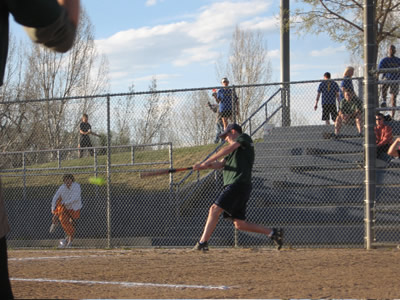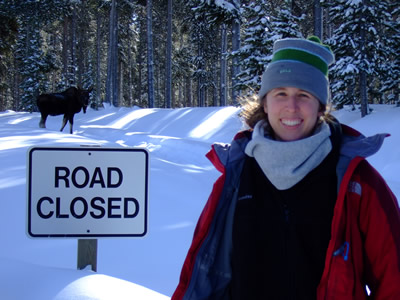Click on image for full size
Courtesy of Ellen Jones
Todd Jones
I first became interested in studying science and math in about the 8th grade when I discovered my love for reading maps (specifically weather maps) and graphs and plots. Plus, I grew up in Northeast Ohio where there was a much-revered television weather man who happened to have gone to the same school system that I was in. So that influence was strong.
I am a PhD student at Colorado State University where I am studying the use of cloud-resolving models to represent the effects of clouds on the weather in global models. "What does that mean?", you might ask. Well, when we use computer models of the atmosphere that cover the whole planet, we have to simplify the representation of things like how rain forms, what happens to turbulent winds, and anything else that happens over short distances so that the computer can finish its simulation in a reasonable amount of time. Models that only cover small areas of the world (like cloud-resolving models) can include more detailed information about that small-scale stuff. So I use these "cloud-scale" models, let them react to the weather on the larger scale, and then tell the "global-scale" about how the clouds responded and acted to change the larger scale weather. It is important to have detailed information about what the clouds are doing because they have such a strong effect on the weather and climate through radiation, precipitation, and the energy in the atmosphere. Researching and improving modeling techniques like this will make weather predictions better and better so that we will be able to "believe the weather man" a little bit more than we can right now.
I find my work rewarding in that, somewhere down the line, I know that it is going to help someone in some way. Outside of work, my wife and I love to go hiking, backpacking, biking, and visit all the interesting places around Fort Collins, all with two kids in tow.














